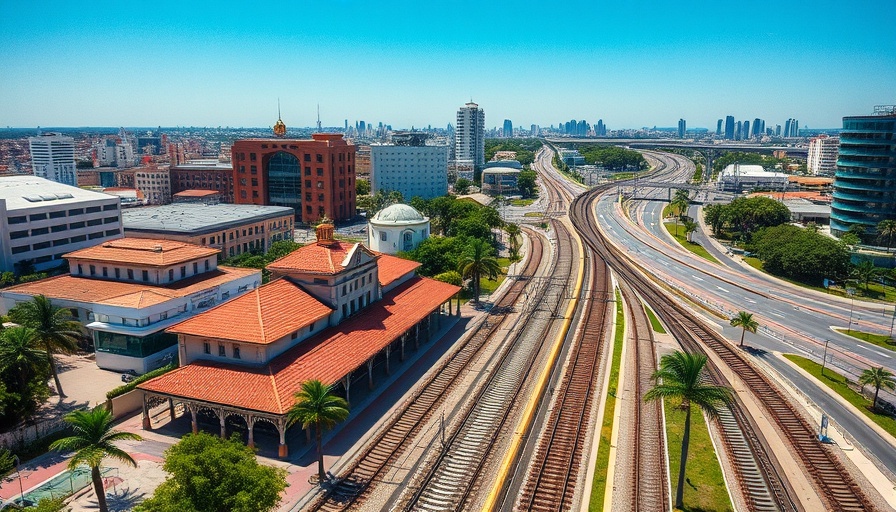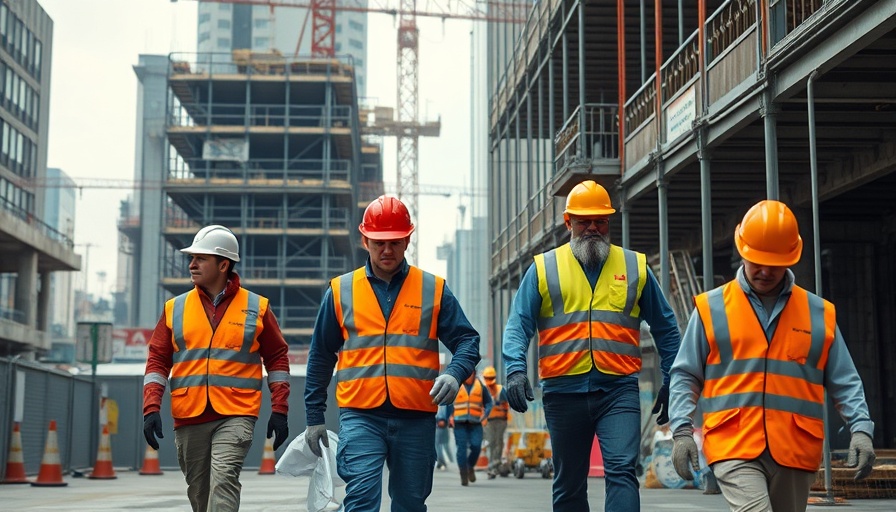
Data Centers: A Capacity Crunch Amidst Growing Demand
The data center industry is currently witnessing a remarkable trend where vacancy rates have hit a record low. This phenomenon has been starkly illustrated in a recent CBRE report which highlights that despite extensive infrastructure expansions, vacancy rates in North America’s major markets have dropped substantially. This continues to be a key issue for business owners, property developers, and facility managers navigating an increasingly competitive landscape.
The Impact of AI on Rental Rates
As artificial intelligence (AI) technologies proliferate, there has been a drastic shift in the demand for colocation services. CBRE noted that the first quarter of this year saw a surge in rental rates, with significant increases of 15% in Northern Virginia and 14.7% in Chicago compared to the previous year. This spike in rental pricing underscores the market's response to a growing clientele of hyperscalers and enterprises that are diversifying their infrastructure amidst rising demands. The increased demand prompts higher rental rates, compelling decision-makers to assess their data center strategies moving forward.
Understanding the Factors Behind Colocation Price Increases
Several factors contribute to the rising colocation prices, with high demand and construction cost challenges at the forefront. The transition from traditional CPUs to more power-intensive GPUs in AI workloads is driving utility constraints, which is a critical concern for operators in this space. According to Gordon Dolven from CBRE, the historical reductions in data center space pricing from 2013 to 2020 are now a thing of the past. As businesses forge ahead with digital transformation, the ask for available space has created a premium on existing inventory.
Industry Response: Building Boom vs. Rising Costs
In response to crippling capacity constraints, major cloud service providers like AWS, Microsoft, and Google Cloud are leading a hyperscaler building boom. With over $250 billion earmarked for chips, hardware, and new constructions aimed at bolstering AI adoption, this paradigm shift is reshaping the development landscape. While the construction of new facilities is accelerating (with an impressive 43% year-over-year growth in major hubs), organizations must also grapple with the logistics of enhancing their infrastructure in a costly environment. The challenges tied to high voltage power line installations and new substations stress the importance of strategic planning and adaptable project management in capital development.
Future Outlook: Strategies for Navigating Market Dynamics
Given the current trends, it’s vital for business owners and facility managers to recalibrate their strategies in light of this rapidly evolving marketplace. As the cost of data center space continues to fluctuate, executives must prioritize innovative property development concepts, operational efficiency, and long-term partnerships to mitigate risks associated with housing and logistics. Socially conscious businesses also have an opportunity to leverage sustainable building practices that appeal to modern consumers, thereby enhancing market competitiveness.
In conclusion, the data center sector faces a pivotal moment marked by unprecedented demand and escalating rental rates. Maintaining awareness of industry changes will enable property developers and business owners to make informed, strategic decisions as they navigate these challenges.
Business owners, property developers, and facility managers should take the time to evaluate their data center strategies. Acting now can secure your business’s operational future in an increasingly dynamic marketplace.
 Add Row
Add Row  Add
Add 




Write A Comment